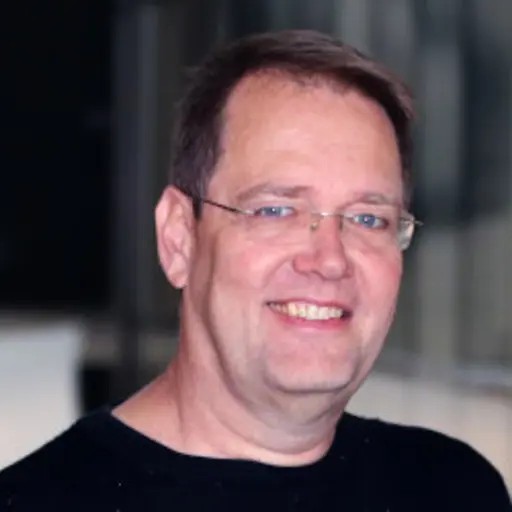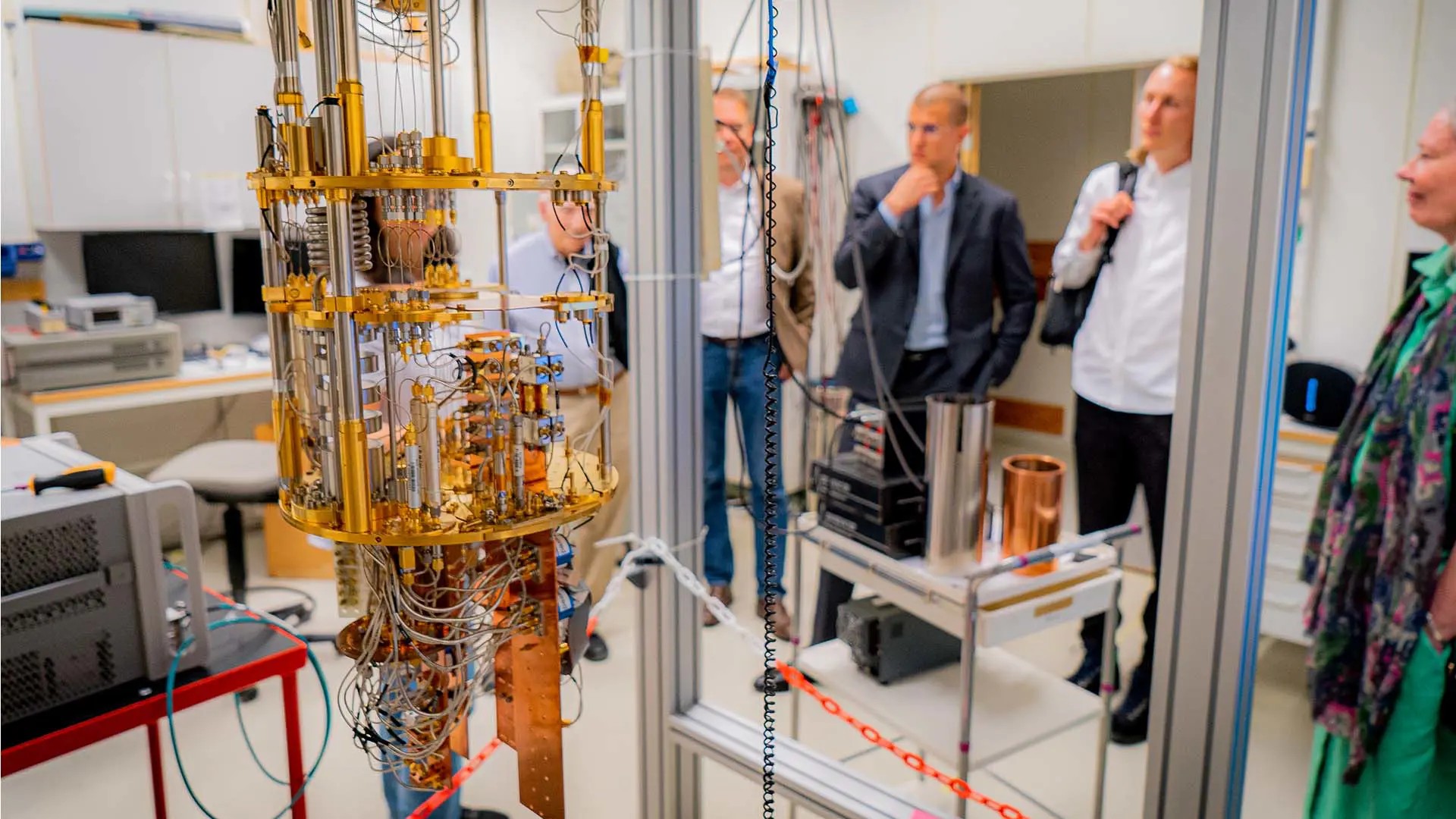
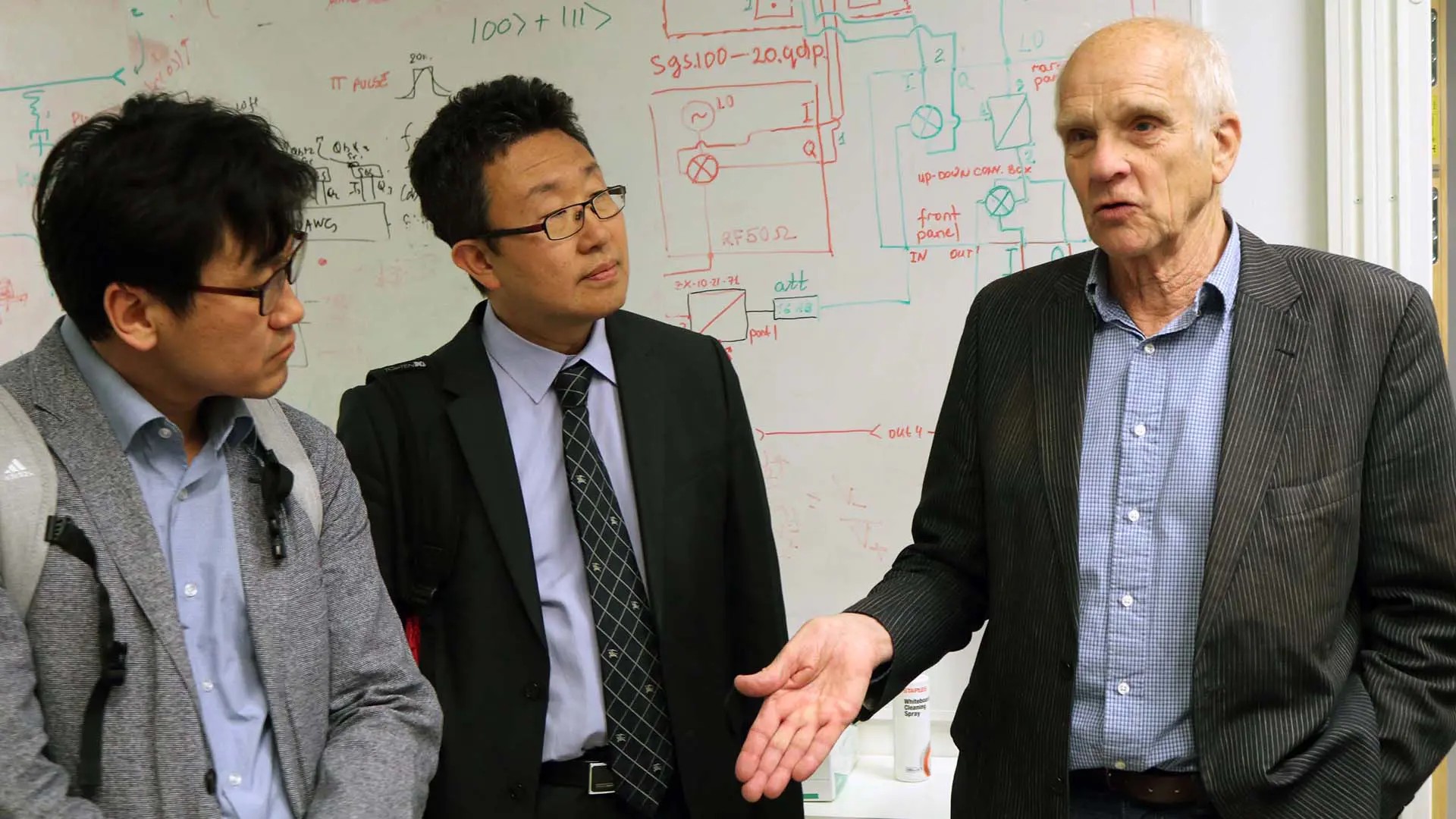
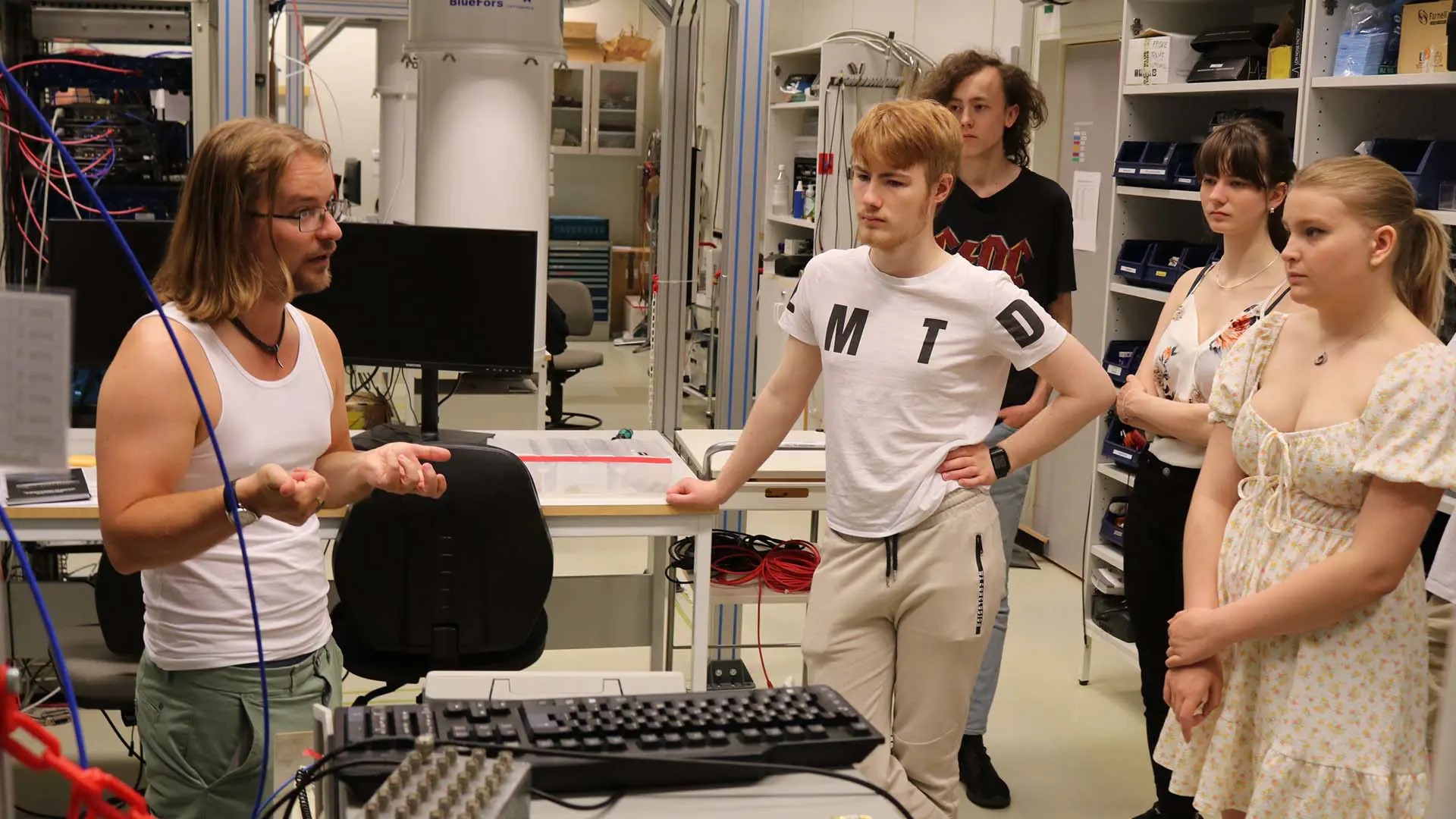
In step with the progress of quantum technology, the outside world’s interest in Chalmers' quantum computer is boosting – as is the number of study visits at WACQT. This spring the center has welcomed a number of curious students, companies and decision-makers from Sweden and abroad - all of whom want to know more about Chalmers’ quantum computer.
The world's increased interest in quantum technology has hardly gone unnoticed among the researchers and staff within WACQT. The trend is not least visible in coordinator Johan Veiga Benesch's inbox, which receives more and more emails from schools, companies, authorities, and government representatives - in Sweden and abroad - who want to come visit and hear more about Chalmers' quantum computer.
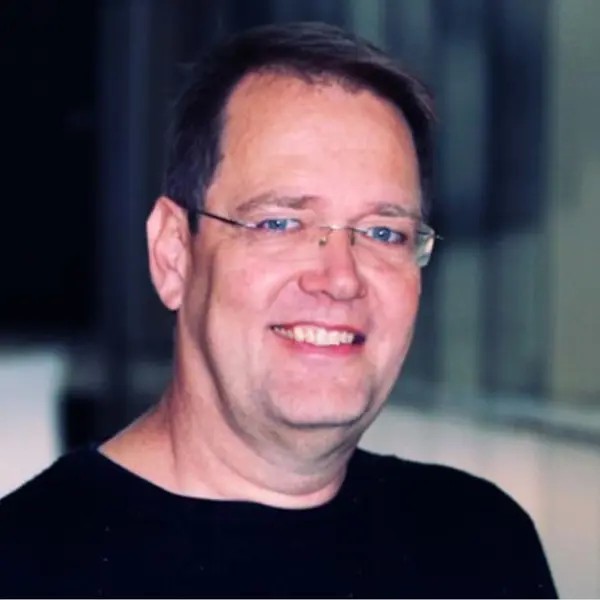
“A lot is happening in quantum technology these days. Above all, in the last two years we have seen many national initiatives outside of Sweden and therefore also extra funding for quantum technology, both for research and for starting quantum technology companies. It makes the press pick up news coming from WACQT. As a result, in the past year we have also seen great interest in what we do, with visitors from Swedish schools, financiers, companies, and ministries as well as guests from abroad,” says Johan Veiga Beneschs, scientific coordinator for WACQT.
Close to 50 groups have been showed around the premises at the Department of Microtechnology and Nanoscience at Chalmers - including university students, upper secondary classes, ambassadors, EU commissioners, several large companies, representatives from the defense sector, members of the Wallenberg family - and even the 2012 Nobel Laureate in Physics, David J. Wineland.
The visits usually begin with a presentation of WACQT and an introduction to the subject of quantum technology, followed by a tour of the laboratories. The greatest activity is of course around the quantum computer itself, as well as in the Clean Room where a large part of the research that makes the quantum computer possible takes place.
The importance of gaining and spreading quantum knowledge
For the roughly 30 upper secondary school students from Göteborgsregionens Tekniska Gymnasium who visited WACQT in June, the visit seems to have left an impression - not least visually.
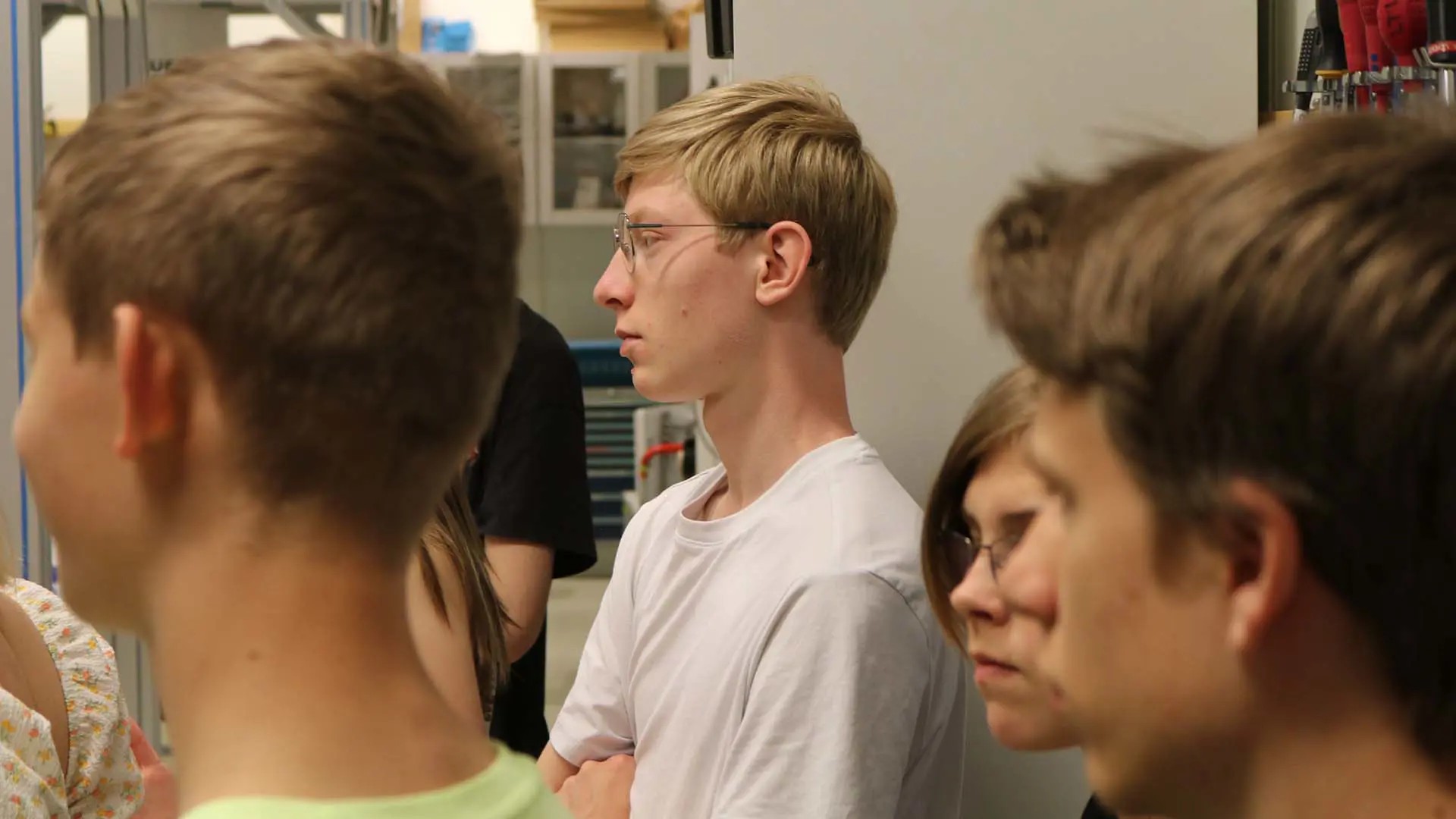
“I thought it was very impressive to see the cryostat around the quantum computer and how everything is connected. I really like technology that looks like it's from the 80s, while knowing it's really super modern. There's a bit of a steampunk feel to it,” says Alex Gärdeman, a second-year student in the Technology program majoring in Electronics and Programming.
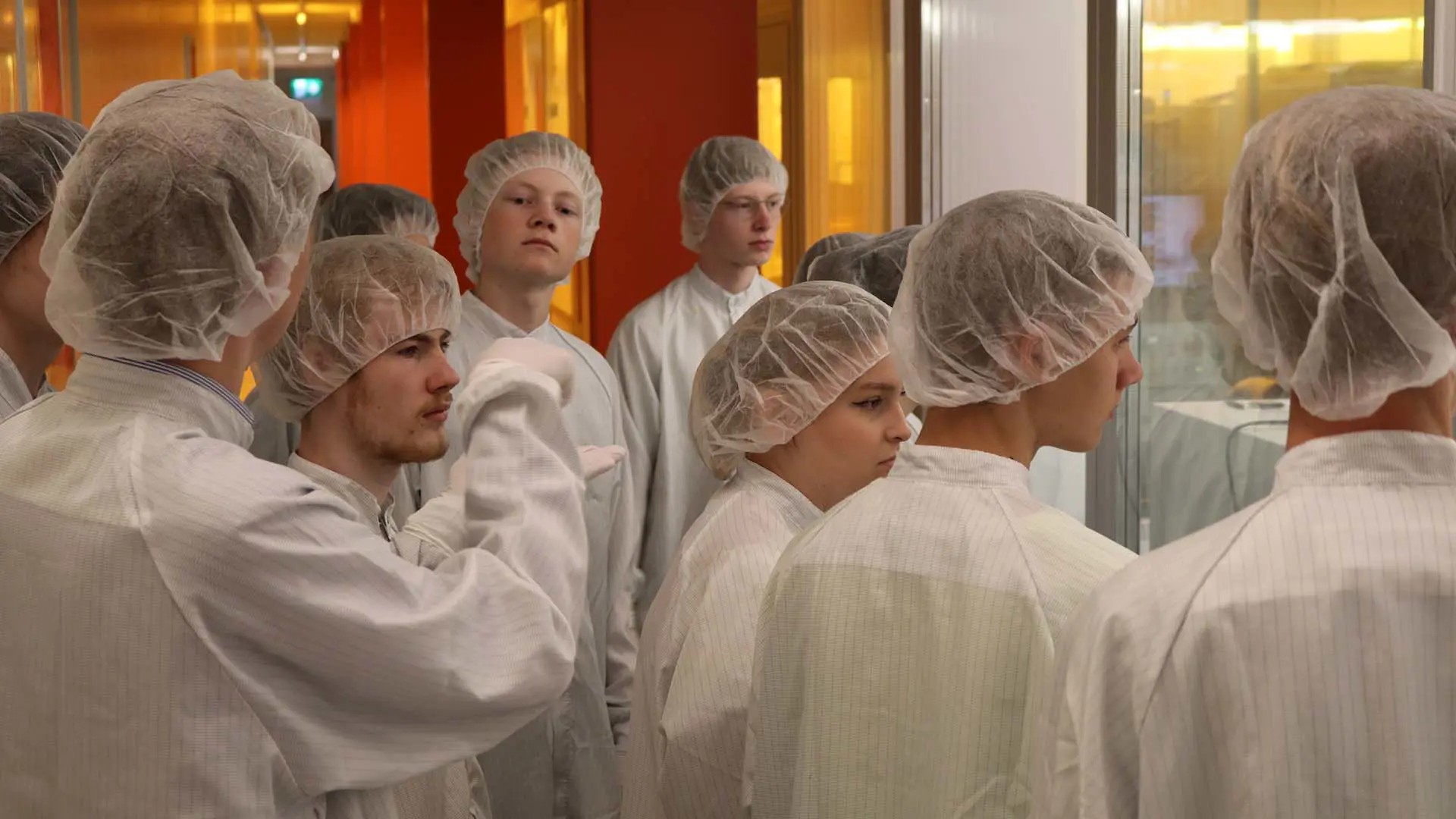
For classmate Nils Hjortsberg, it was the tour of the Clean Room that made the strongest impression.
“It was extra impressive to see the discs or dices, down in the Clean Room. I've only seen videos before on how processors are made, so it was cool to see it for real,” he says.
This is not the first time the high school has visited WACQT, and for Anne-Maj Raaholt, teacher of programming and computer technology, the visit is her second in a row. For her, it is not only about the opportunity to learn, but also to pass on information.
“This type of information dissemination probably creates different types of ripples on the water. It not only creates thoughts in those who get to look at and hear about the quantum computer, but also in those who get to hear about it in the next stage,” says Anne-Maj Raaholt.
Quantum technology is now a subject that students and teachers tackle in the classroom - albeit on an overall level.
“On some level, we understand some parts of quantum technology. In addition, it is really useful to realize that even if you don't understand everything, you may need, or want, to really get to think about things,” says Anne-Maj.
Strategic investment for Swedish competitiveness
As one of the strategic programs of the Knut and Alice Wallenberg Foundation, WACQT has also welcomed representatives from the foundation. On the occasion, the foundation was visited by Arthur Bienenstock, Professor Emeritus of Photon Science at Stanford, who was joined by Ingrid Sundström, from the Wallenberg Foundations, as well as Carl Jan Risberg and Lucas Wallenberg, two members of the sixth generation Wallenberg. Together, they took the opportunity to take a closer look at Chalmers' quantum computer.
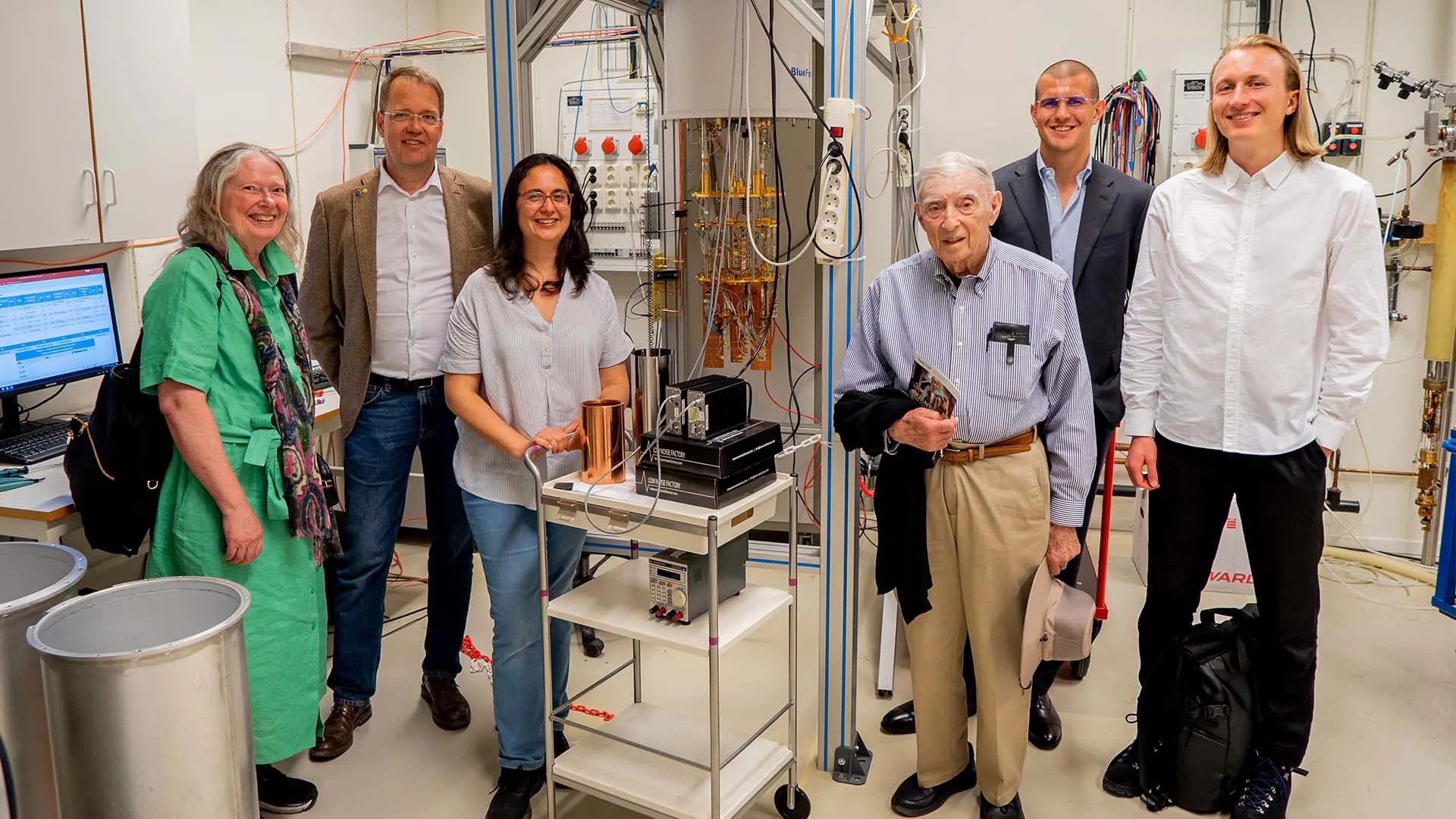
“A strategic program is initiated by the Foundation when important areas of the future have been identified, where there is excellent basic research and there is a need for competence and knowledge building within academia as well as business and society in order for Sweden to keep up with the international competition. The foundation has allocated SEK 13 billion over twelve years for the six strategic programs in total. So, when the foundation was visited by Arthur Bienenstock, Professor Emeritus of Photon Science and the Wallenberg Foundations’ contact at Stanford in his capacity as Director of the Wallenberg Research Link, we wanted to take the opportunity to visit some of the strategic programs,” says Ingrid Sundström from the Wallenberg Foundation.
“I was amazed over the advanced capabilities in quantum research demonstrated at Chalmers together with the extreme competence of people involved,” says Arthur Bienenstock, Professor Emeritus in Photon Science at Stanford.
Hope for international quantum collaborations
In June, WACQT was also visited by a South Korean delegation consisting of, among others, the Director of the Ministry of Science and Technology, Sung Soo Kim, responsible for the country's national quantum policy. Also present was the Director of the National Research Foundation of Korea-Sweden Office and the Korea-Nordic Science & Technology Cooperation Center, Sung-Jong Lee. Previously, he had been able to follow the development of WACQT's quantum computer in a series of articles, and also in a South Korean YouTube channel on science and technology. So, when partner organization Vetenskapsrådet suggested a visit to WACQT, it was more than well received.
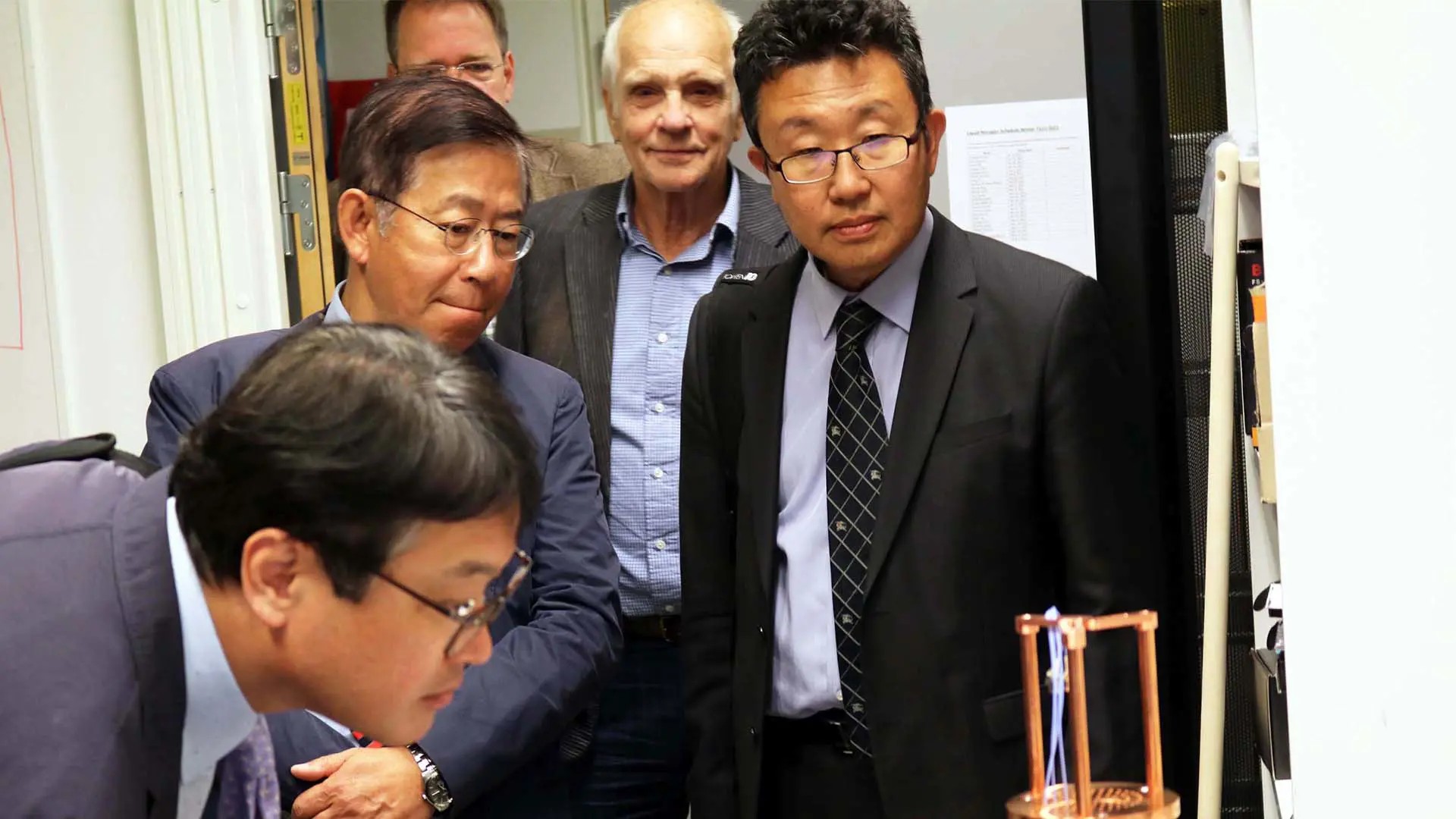
“Witnessing the state-of-the-art quantum computer in action was truly awe-inspiring, showcasing the immense computational power and the promising future of quantum technology. Interacting with the brilliant researchers and scientists at Chalmers was equally enriching, as their passion and dedication to pushing the boundaries of quantum computing left a lasting impression on me,” says Sung-Jong Lee.
And now the hope is for the visit to lead to technological collaborations in the future.
“I gained from this visit the possibility of bilateral technology cooperation between Korea and Sweden. First, Director Sung Soo Kim, the best expert on bilateral policy in Korea, judged that WACQT has a complementary relationship with us, so if we cooperate, there will be synergy. I agree with the view. In Korea, there is a policy basis for strengthening international cooperation in the future, so I think the possibility is high,” he says.
- Project Coordinator, Quantum Technology, Microtechnology and Nanoscience
